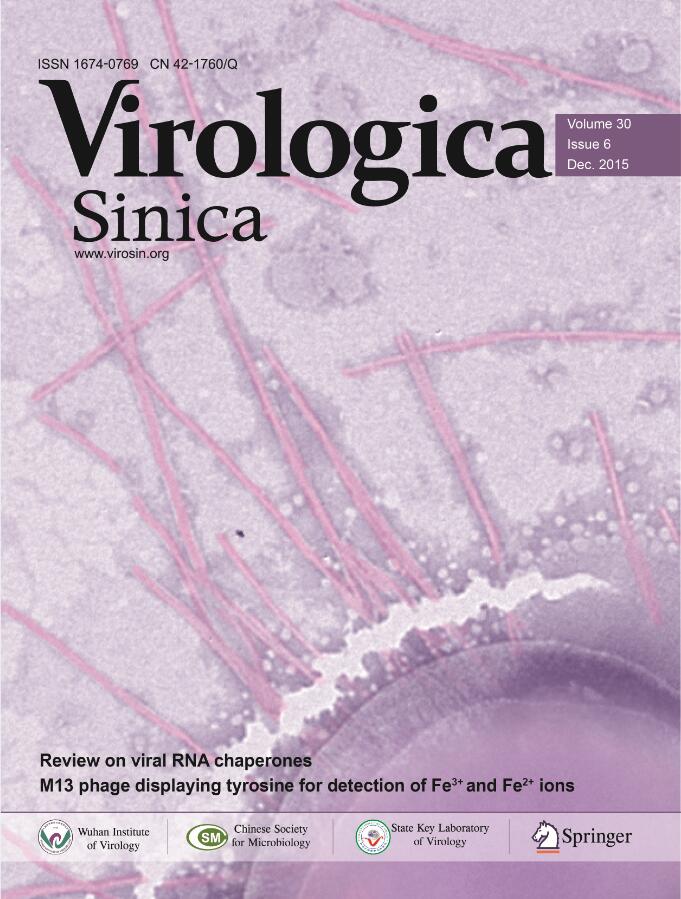-
Allen LH, 2002. Iron supplements: scientific issues concerning efficacy and implications for research and programs. J Nutr, 132: 813S–819S.
-
DePorter SM, McNaughton BR. 2014. Engineered M13 bacteriophage nanocarriers for intracellular delivery of exogenous proteins to human prostate cancer cells. Bioconjug Chem, 25: 1620–1625.
doi: 10.1021/bc500339k
-
Ghosh D, Kohli AG, Moser F, Endy D, Belcher AM. 2012. Refactored M13 bacteriophage as a platform for tumor cell imaging and drug delivery. ACS Synth Biol, 1: 576–582.
doi: 10.1021/sb300052u
-
Glucksman MJ, Bhattacharjee S, Makowski L. 1992. Three-dimensional structure of a cloning vector. X-ray diffraction studies of filamentous bacteriophage M13 at 7 A resolution. J Mol Biol, 226: 455–470.
-
Guo YC, Zhou YF, Zhang XE, Zhang ZP, Qiao YM, Bi LJ, Wen JK, Liang MF, Zhang JB. 2006. Phage display mediated immuno-PCR. Nucleic Acids Res, 34: e62.
doi: 10.1093/nar/gkl260
-
Hess GT, Guimaraes CP, Spooner E, Ploegh HL, Belcher AM. 2013. Orthogonal labeling of M13 minor capsid proteins with DNA to self-assemble end-to-end multiphage structures. ACS Synth Biol, 2: 490–496.
doi: 10.1021/sb400019s
-
Kehoe JW, Kay BK. 2005. Filamentous phage display in the new millennium. Chem Rev, 105: 4056–4072.
doi: 10.1021/cr000261r
-
Lee SK, Yun DS, Belcher AM. 2006. Cobalt ion mediated self-assembly of genetically engineered bacteriophage for biomimetic Co-Pt hybrid material. Biomacromolecules, 7: 14–17.
doi: 10.1021/bm050691x
-
Lee SW, Mao C, Flynn CE, Belcher AM. 2002. Ordering of quantum dots using genetically engineered viruses. Science, 296: 892–895.
doi: 10.1126/science.1068054
-
Liu Z, Qiao J, Niu Z, Wang Q. 2012. Natural supramolecular building blocks: from virus coat proteins to viral nanoparticles. Chem Soc Rev, 41: 6178–6194.
doi: 10.1039/c2cs35108k
-
Maeda Y, Javid N, Duncan K, Birchall L, Gibson KF, Cannon D, Kanetsuki Y, Knapp C, Tuttle T, Ulijn RV, Matsui H. 2014. Discovery of catalytic phages by biocatalyticself-assembly. J Am Chem Soc, 136: 15893–15896.
doi: 10.1021/ja509393p
-
Neltner B, Peddie B, Xu A, Doenlen W, Durand K, Yun DS, Speakman S, Peterson A, Belcher A. 2010. Production of hydrogen using nanocrystalline protein-templated catalysts on m13 phage. ACS Nano, 4: 3227–3235.
doi: 10.1021/nn100346h
-
Oh D, Qi J, Han B, Zhang G, Carney TJ, Ohmura J, Zhang Y, Shao-Horn Y, Belcher AM. 2014. M13 virus-directed synthesis of nanostructured metal oxides for lithium-oxygen batteries. Nano Lett, 14: 4837–4845.
doi: 10.1021/nl502078m
-
Omara FO, Blakley BR. 1993. Vitamin E is protective against iron toxicity and iron-induced hepatic vitamin E depletion in mice. J Nutr, 123: 1649–1655.
-
Park JP, Do M, Jin HE, Lee SW, Lee H. 2014. M13 bacteriophage displaying DOPA on surfaces: fabrication of various nanostructured inorganic materials without time-consuming screening processes. ACS Appl Mater Interfaces, 6: 18653– 18660.
doi: 10.1021/am506873g
-
Smith GP. 1985. Filamentous fusion phage: novel expression vectors that display cloned antigens on the virion surface. Science, 228: 1315–1317.
doi: 10.1126/science.4001944
-
Smith GP, Petrenko VA. 1997. Phage Display. Chem Rev, 97: 391–410.
doi: 10.1021/cr960065d
-
Wu L, Lee LA, Niu Z, Ghoshroy S, Wang Q. 2011. Visualizing cell extracellular matrix (ECM) deposited by cells cultured on aligned bacteriophage M13 thin films. Langmuir, 27: 9490– 9496.
doi: 10.1021/la201580v
-
Yi H, Ghosh D, Ham MH, Qi J, Barone PW, Strano MS, Belcher AM. 2012. M13 phage-functionalized single-walled carbon nanotubes as nanoprobes for second near-infrared window fluorescence imaging of targeted tumors. Nano Lett, 12:1176–1183.
doi: 10.1021/nl2031663
-
Yoo PJ, Nam KT, Qi J, Lee SK, Park J, Belcher AM, Hammond PT. 2006. Spontaneous assembly of viruses on multilayered polymer surfaces. Nat Mater, 5: 234–240.
doi: 10.1038/nmat1596
-
Zhang X, Hou Y, He W, Yang G, Cui J, Liu S, Song X, Huang Z. 2015. Fabricating high performance lithium-ion batteries using bionanotechnology. Nanoscale, 7: 3356–3372.
doi: 10.1039/C4NR06815G













